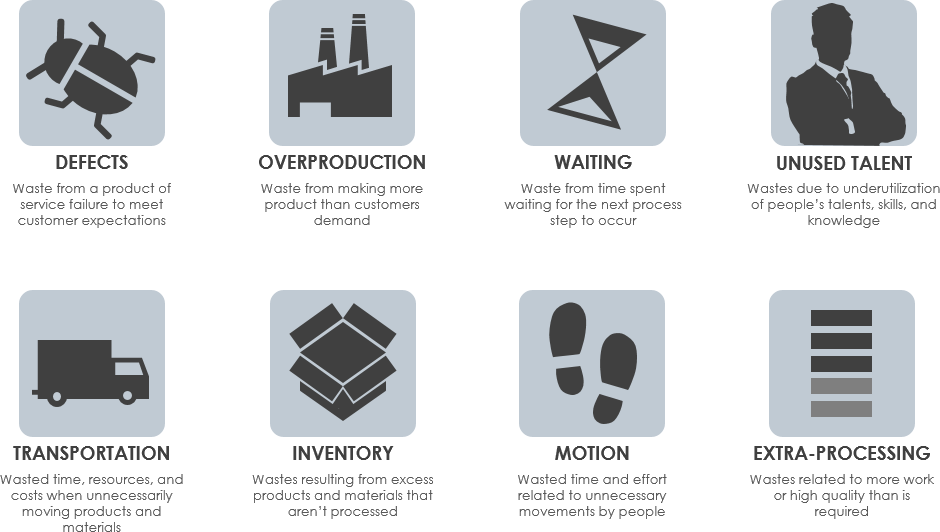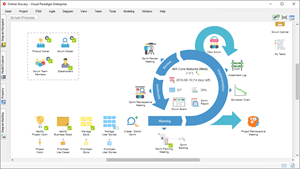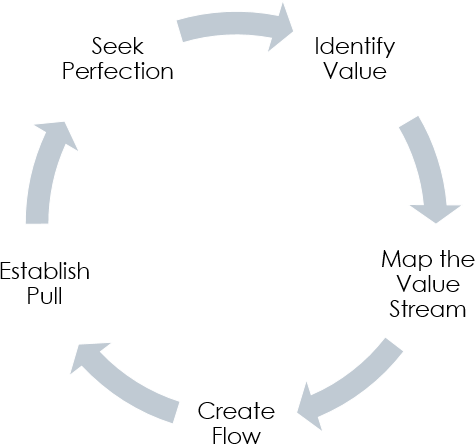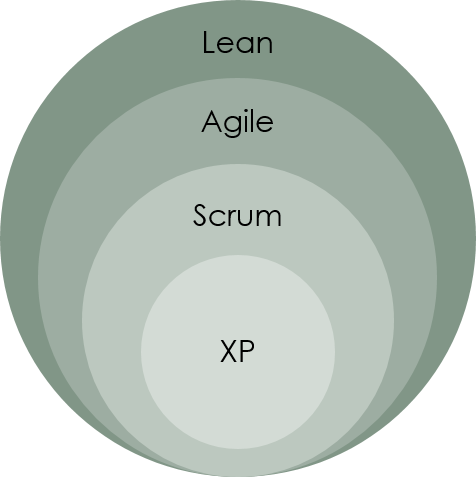A lean organization understands customer value and focuses its key processes to continuously increase it. The ultimate goal is to provide perfect value to the customer through a perfect value creation process that has zero waste.
A waste is any step or action in a process that is not required to complete a process (called “Non Value-Adding”) successfully. When Waste is removed, only the steps that are required (called “Value-Adding”) to deliver a satisfactory product or service to the customer remain in the process.
These are the 8 Wastes:
Later, the Lean concept was adapted by Eric Ries in his famous book, Lean Startup.


Best Scrum Software Every Project Needs
A powerful scrum software that supports scrum project management. It features scrum tools like user story map, product backlog management, sprint backlog management, task management, daily scrum meeting, sprint planning tool, sprint review tool, sprint retrospective tool, burndown, impediment, stakeholder and team management.
The five-step thought process for guiding the implementation of lean approach is easy to remember, but not always easy to achieve:

Lean came much earlier than the Agile Manifesto. It emerged in postwar Japan in automobile factories that wanted to be more productive.
The Figure shown below can easily be misunderstood that Agile is a subset of Lean, and in turns, Scrum is a subset of Agile.

What it mean is that:
In short, lean projects are quite effective if they incorporate Agile concepts into their execution. After all, Lean means lean, without excess or waste, something that meets all that the Agile methodologies propose.
| About Visual Paradigm |
 Visual Paradigm help organizations stay competitive and responsive to change faster and better in today’s fast changing environment. Our award-winning products are trusted by over 320,000 users in companies ranging from small business, consultants, to blue chip organizations, universities and government units across the globe. It enables organizations to improve business and IT agility and foster innovation through popular open standards and process frameworks.Visual Paradigm, a killer Agile feature in 2018, introduced Scrum Process Canvas for automating the way a Scrum team to create, manage and deploy software application that empowers the team to continuously improve their performance at unprecedented speed and scale. Visual Paradigm help organizations stay competitive and responsive to change faster and better in today’s fast changing environment. Our award-winning products are trusted by over 320,000 users in companies ranging from small business, consultants, to blue chip organizations, universities and government units across the globe. It enables organizations to improve business and IT agility and foster innovation through popular open standards and process frameworks.Visual Paradigm, a killer Agile feature in 2018, introduced Scrum Process Canvas for automating the way a Scrum team to create, manage and deploy software application that empowers the team to continuously improve their performance at unprecedented speed and scale.
Manage the Entire Scrum Process in One Page
|